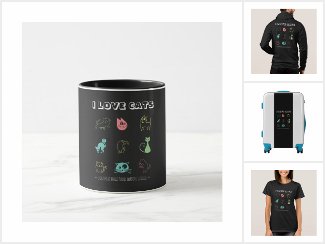* Article contains a teeny-weeny affiliate link to SEO Clerks, ’cause we like’em.
Yes, we’re patting ourselves on the back😎
We did a sterling job with our Christmas gift push last year, and managed to get on the first page of Google Search with the SEO written article ‘Fun White Elephant Gifts (Themes & Ideas)’. And we did it all without Google Ads, and in less than three weeks.
But we’re not just here to gloat.
We’re sharing the recipe so you can get there too.
It’s a dead simple, 5 step process.
Ready?
Step 1: Pick a long-tail keyword that sells
For our first Christmas gifts campaign we chose the long-tail keyword ‘fun white elephant gifts’.
According to the Google Keywords Planner, this search term has a monthly traffic average of 10-100K, which is pretty decent.
It’s also a high competition keyword, meaning you’ll have plenty of competitors, which can be a mixed blessing. If the competition is too low, there is usually no money to be made. If it’s too high, chances are you’ll disappear in the crowd or get squashed by the big players.
Now, if you manage to find a keyword that has LOW COMPETITION, and HIGH TRAFFIC – holy cow!
You’ve struck gold. That means you’ve stumbled onto something that could be the next big thing.
These are rare finds and it usually doesn’t take very long for competitors to sniff them out.
So, make the most of them while you can.
Step 2: Use your long-tail keyword wisely
Say, you’re writing a sales piece on a popular app. And you’ve discovered that the long-tail keyword ‘Supermoney app honest review‘ has great potential. It’s got a medium competition score, and a search volume between 100K and 1M.
That’s fab.
Now, for a short article of 500 words, use your long-tail keyword 3 times.
And add other related keywords to the text as well. Like, ‘is the Supermoney app legit?’
This acts to support the primary keyword and make the text appear more relevant to Google.
Since Google lauched its BERT algorithm update, it has (thankfully) gotten harder for spammers to climb to the top of Google search. Instead of keyword density, Google is now much more sensitive to context than before. So, when you add other related search terms to the article, Google sees this and gives it more weight.
And please remember that search engines are not the only ones who will be reading your work.
Are you giving people what they came for?
If you’re only feeding Google, and starving your audience, you can’t expect to make sales.
Step 3: Headline, URL and domain name
Make sure that these three things are supporting your long-tail.
If your keyword is ‘Supermoney app honest review’…
…but your headline is ‘the truth about Supermoney‘…
….and the url is YourWebsite.com/11092022…
You’ve wasted precious SEO space.
Sure, the content matters the most. And if you’ve got great stuff on your site, it really shouldn’t matter.
But everything matters in SEO.
So, be consistent.
A better headline would be “The Supermoney app: Honest review from an experienced user”.
And the url could simply be ‘supermoney-app-honest-review’.
This way, every part of your website tells Google (and potential customers) what’s there.
For bonus points, try to find the exact match domain (EMD) for your long-tail. Which simply means you add a .com to your search term, as in supermoneyapphonestreview.com.
Next, you run a 301 redirect of the EMD to your article for extra search juice.
We bought funwhiteelephantgifts.com, and did just this. We redirected the domain to our article of the same name.
Mind you, this only works if you have a decent website with quality content that matches the domain name.
Step 4: Add linkjuice!
Google loves linkjuice.
It crawls the web, checking who links to what.
That’s how it finds out what’s hot or not.
And if you’re all by your lonesome, with nobody sharing links to your website, Google decides you’re probably not all that great.
Bummer!
But, not all links are equally yummy.
Like backlinks from porn and scam sites, and blogs that haven’t been updated for eons.
What you want are ‘Do-Follow’ backlinks from high domain authority (DA) websites.
You may be able to add these yourself, or have someone do it for you.
We enlisted the aid of a few friends at SEOClerks to help us get juiced up.
Worked like a charm.
Step 5: Trrrrrraffic!
You’ve got the long-tail keyword, the article, url and domain all sorted.
And the linkjuice is flowing.
But, where is everybody?
According to Ahrefs, “90.63% of Content Gets No Traffic From Google“.
And that’s not because it all sucks.
It’s just like when you’re new in town, and you invite a bunch of people to a party.
Just throwing an invite out there, hoping the cool kids will stop by, is not going to work.
The first person who comes will probably turn around when they see the place is empty.
Google is like that. He shows up early, sees what’s cooking (not much), and leaves.
And he’s not keen on recommending the party to others either.
(What party? There is nobody here!)
So, the catch 22 is that you have to get traffic to get traffic (from Google).
Maybe you’ll have to pay a few people to attend your party before it gets going.
The good news is that once people start coming to your party central (paid or unpaid), Google notices and improves your search ranking.
And that is when you finally start getting traffic from your trusty, old search engine.
As for unpaid traffic, try the social networks and forums first.
Get into a few Facebook groups that are relevant to your business or product.
Start a subreddit, and drive traffic that way.
Or post an article on Medium and LinkedIn.
Real social engagement beats paid ads every day.
As OptInMonster puts it, “78% of salespeople engaged in social selling are outselling their peers who aren’t.”
That is largely because people don’t trust advertisers, but they do trust eachother. And that’s great news for you, because you’re the real deal, right?
Thought so😊








